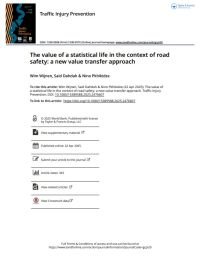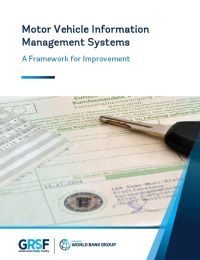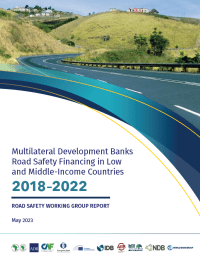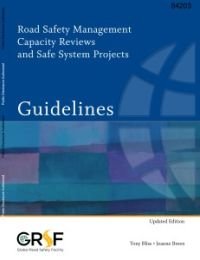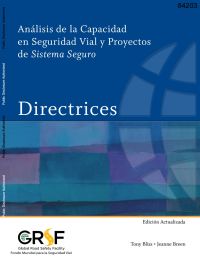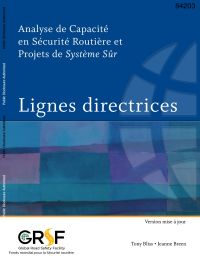Publications
1-7 of 7
-
Economics & Finance
Journal Article - The Value of a Statistical Life in the Context of Road Safety: A New Value Transfer Approach
May 2025
-
Road Safety Management
Motor Vehicle Information Management Systems: A Framework for Improvement
March 2025
-
Economics & Finance
Multilateral Development Banks Road Safety Financing in Low and Middle-Income Countries: 2018–2022
May 2023
-
-
Road Safety Management
Road Safety Management Capacity Reviews and Safe System Projects Guidelines
May 2013
-
Specify a management and investment framework to overcome institutional capacity barriers and support the successful implementation of road safety interventions;
-
Provide practical procedures designed for application at a country level to accelerate knowledge transfer and sustainably scale up investment to improve road safety results;
-
Ensure that institutional strengthening initiatives are properly sequenced and adjusted to the absorptive and learning capacity of the country concerned.
-
Road Safety Management
Análisis de la Capacidad en Seguridad Vial y Proyectos de Sistema Seguro (Spanish)
May 2013
- Especificar un marco de gestión e inversión para superar las barreras de capacidad institucional y apoyar la implementación exitosa de intervenciones de seguridad vial;
- Proporcionar procedimientos prácticos diseñados para su aplicación a nivel de país para acelerar la transferencia de conocimientos y aumentar de manera sostenible la inversión para mejorar los resultados de seguridad vial;
- Garantizar que las iniciativas de fortalecimiento institucional estén debidamente secuenciadas y ajustadas a la capacidad de absorción y aprendizaje del país en cuestión.
-
Road Safety Management
Analyse de Capacité en Sécurité Routière et Projets de Système Sûr (French)
May 2013
- Spécifier un cadre de gestion et d'investissement pour surmonter les obstacles liés aux capacités institutionnelles et soutenir la mise en œuvre réussie des interventions de sécurité routière ;
- Fournir des procédures pratiques conçues pour être appliquées au niveau national afin d'accélérer le transfert de connaissances et d'accroître durablement les investissements pour améliorer les résultats en matière de sécurité routière ;
- Veiller à ce que les initiatives de renforcement institutionnel soient correctement séquencées et ajustées à la capacité d'absorption et d'apprentissage du pays concerné.
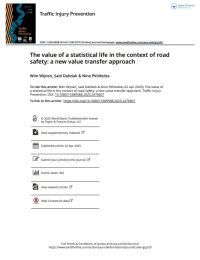
Objective: The value of a statistical life (VSL) is a key input for cost-benefit analysis (CBA) in the context of road safety and for calculations of the socio-economic costs of road crashes. However, many countries, especially low- and middle-income countries (LMIC), lack country-specific VSL estimates. To address this, value transfer is often used, where VSL estimates from other countries are adapted to local situations to estimate the VSL in the countries with no VSL estimates. This paper presents new guidance for VSL value transfer in the context of road safety.
Method: A unit value transfer approach is applied, which implies that a base VSL is determined and used to estimate the VSL in other countries. We collected VSL estimates from 32 countries worldwide to determine base VSLs for both high-income countries (HIC) and LMIC. According to the literature, the VSL is strongly correlated with income per capita. Therefore, income elasticities from the literature are applied to account for the impact of per capita income on the VSL.
Results: The resulting VSL transfer functions are VSL = 0.404*(Y/5,726)1.2 for LMIC and VSL = 3.206*(Y/42,087)0.8 for HIC, where VSL is the VSL in million USD and Y is the Gross National Income per capita (USD, 2020 prices). The VSL ranges from approximately 22,000 USD to 1.1 million USD in LMIC and from 1.2 million USD to 4.8 million USD in HIC.
Conclusions: We recommend applying this VSL transfer approach for cost-benefit analysis and road crash costing in countries lacking appropriate country-specific VSL. Moreover, this study highlights that, despite the growing interest in LMIC in research on VSL, the number of studies in these countries is still limited, emphasizing the need for more VSL studies. Finally, developing transfer functions for non-fatal injuries is recommended, which is an essential input for CBA as well.
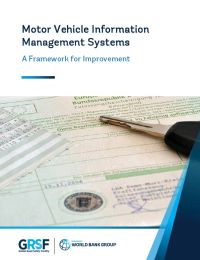
The rapid growth of motorization worldwide has brought both opportunities and challenges, impacting health, resource consumption, and accessibility. Effective management of motor vehicle fleets is crucial for maximizing benefits while minimizing negative consequences. This report presents a framework for improving Motor Vehicle Information Management Systems (MVIMS) to enhance public policy outcomes.
A well-structured MVIMS can support regulatory efforts by improving oversight of used vehicle imports, ensuring compliance with vehicle safety and emissions standards, facilitating periodic inspections, and strengthening vehicle insurance systems. The report highlights key findings from a survey of MVIMS practices in 13 low- and middle-income countries, revealing challenges in data integration, institutional coordination, and information accessibility.
By adopting best practices and strengthening governance, MVIMS can play a critical role in enhancing road safety, environmental sustainability, and transport efficiency. The report outlines a strategic pathway—Assess, Envision, Plan, Implement, and Monitor—to guide countries in developing robust MVIMS that support effective transport management.
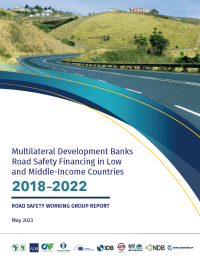
The Multilateral Development Banks (MDBs) Road Safety Working Group, established in 2009, is comprised of ten member institutions that are uniquely positioned to support countries in reaching their considerable and challenging road safety financing needs.
In early 2023, the working group reviewed progress made by the MDBs in financing road safety activities in low and middle-income countries (LMICs), and found that MDBs collectively committed $3.6 billion toward road safety initiatives in developing countries during the period 2018-2022. Three standalone road safety projects—in Bangladesh (World Bank), India (Asian Development Bank and World Bank), and Romania (European Investment Bank)—totaled $912 million in MDBs financing, which is more than one-quarter of the amount committed during this timeframe.
The review is based on details of road and urban mobility project financing provided by seven of the working group's ten members.

The World Bank estimates a significant funding gap in road safety of 260 billion to achieve SDG 3.6 and 11.2 in the next ten years, and recognizes that this gap cannot be closed through public funding alone and thus mobilization of private capital is required. The impacts of road traffic crashes reach far into the economy and can cost L/MICs as much as 6% of their GDP. The costs of a road traffic crash do not end at the roadside; they create ripple effects throughout the wider economy. Loss of income, property damage, insurance premiums, loss of taxes, and burdens on the health sector are just some of the far-reaching costs associated with road traffic crashes. Road traffic crashes can cost countries as much as 6 percent of their GDP and trap families in poverty as they lose income generating potential and focus on providing lifetime care.
This report examines the potential for private capital mobilization to close this gap. The report investigates the market failure to appropriately account for the cost of road crashes, which prevents private capital from flowing to road safety investments. The growth of socially responsible investing and the sustainable finance market offers a new opportunity to address this market failure. The report proposes different business models and financing instruments to channel private investment into road safety projects. These investment structures consist of subnational, public-private partnerships (PPPs) and corporate investments that can leverage the growing sustainable finance market, including social and sustainability-linked financings (SLFs).
The report also develops indicators that can be used to tie the cost of financing to the attainment of road safety targets, incentivizing borrowers to commit to road safety as part of SLFs. The report examines the enabling environment for structuring investable road safety projects in a sample of countries, looking at the barriers and opportunities, and proposing risks and mitigation strategies, like blended finance mechanisms and stable revenue sources, for long-term sustainability of road safety investments.

The Road Safety Management Capacity Reviews and Safe System Projects Guidelines have been designed to assist country road safety professionals, World Bank and regional development bank staff, international consultants, community groups, private sector organizations, and all other global, regional and country partners and stakeholders to conduct capacity reviews and prepare follow-up road safety projects in a variety of low and middle-income countries and investment settings.
The purpose of the Guidelines is to:
The Guidelines emphasize managing for results and the associated strengthening of country road safety management systems, with special attention being paid to the role of the lead road safety agency in ensuring institutional effectiveness and efficiency in program delivery. They highlight the importance of addressing all elements of the road safety management system, taking a staged approach to country road safety investment, and targeting the highest concentrations of deaths and injuries across the road network.
For more information visit this page.
This report is also available in:
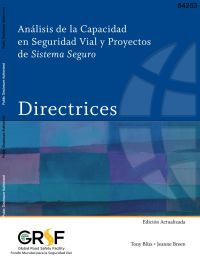
Las Directrices para los proyectos de sistemas seguros y las revisiones de la capacidad de gestión de la seguridad vial se han diseñado para ayudar a los profesionales de la seguridad vial de los países, al personal del Banco Mundial y de los bancos regionales de desarrollo, a los consultores internacionales, a los grupos comunitarios, a las organizaciones del sector privado y a todos los demás socios y partes interesadas mundiales, regionales y nacionales a realizar revisiones de la capacidad y preparar proyectos de seguimiento de la seguridad vial en una variedad de países de ingresos bajos y medios y entornos de inversión.
El propósito de las Directrices es:
Las Directrices hacen hincapié en la gestión para resultados y el fortalecimiento asociado de los sistemas de gestión de la seguridad vial de los países, prestando especial atención al papel del organismo líder de seguridad vial para garantizar la eficacia y eficiencia institucional en la ejecución del programa. Destacan la importancia de abordar todos los elementos del sistema de gestión de la seguridad vial, adoptar un enfoque por etapas para la inversión en seguridad vial del país y centrarse en las mayores concentraciones de muertes y lesiones en toda la red de carreteras.
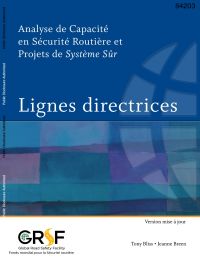
Les Lignes directrices pour les examens des capacités de gestion de la sécurité routière et les projets de systèmes sûrs ont été conçues pour aider les professionnels de la sécurité routière des pays, le personnel de la Banque mondiale et des banques régionales de développement, les consultants internationaux, les groupes communautaires, les organisations du secteur privé et tous les autres partenaires et parties prenantes mondiaux, régionaux et nationaux à mener des examens des capacités et à préparer des projets de suivi de la sécurité routière dans divers pays à revenu faible et intermédiaire et contextes d'investissement.
L'objectif des Lignes directrices est de :
Les Lignes directrices mettent l'accent sur la gestion axée sur les résultats et le renforcement associé des systèmes de gestion de la sécurité routière des pays, une attention particulière étant accordée au rôle de l'agence principale de sécurité routière pour assurer l'efficacité et l'efficience institutionnelles dans l'exécution des programmes. Ils soulignent l’importance de prendre en compte tous les éléments du système de gestion de la sécurité routière, d’adopter une approche progressive en matière d’investissement dans la sécurité routière nationale et de cibler les concentrations les plus élevées de décès et de blessés sur l’ensemble du réseau routier.

